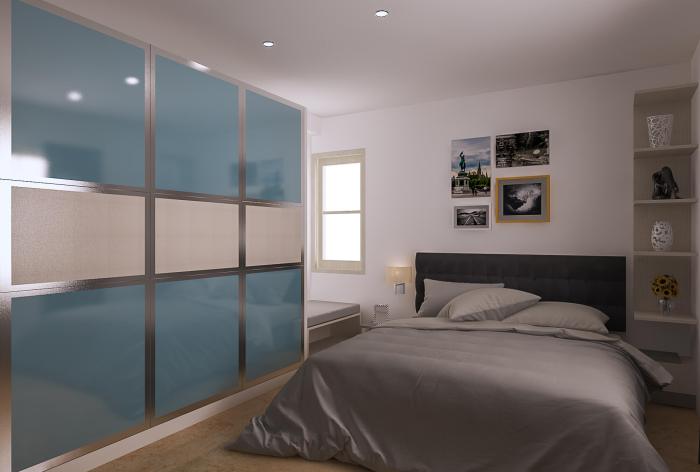Optimizing Wardrobe Interior Design for Ultimate Functionality

Embark on a journey through the world of wardrobe interior design, where every detail matters in creating a space that is both functional and aesthetically pleasing. From maximizing storage space to selecting the right materials, this guide covers it all.
Delve into the nuances of wardrobe interior design and discover how the right layout can transform daily routines and elevate your living space.
Importance of Wardrobe Interior Design
Having a well-designed wardrobe interior can greatly impact your daily life by making it easier to stay organized, save time getting ready, and maximize storage space.
Key Elements for Efficient Wardrobe Layout
- Shelving and compartments: Utilizing adjustable shelves and compartments can help you categorize and store different types of clothing and accessories efficiently.
- Hanging space: Incorporating enough hanging space for shirts, dresses, and pants can prevent wrinkles and make it easier to find and access your clothes.
- Drawer organization: Including drawers with dividers or inserts can help keep smaller items like socks, underwear, and jewelry neatly organized and easily accessible.
- Mirrors and lighting: Adding mirrors and proper lighting inside the wardrobe can make it easier to try on outfits and ensure you can see everything clearly.
Examples of Innovative Wardrobe Interior Designs
Some innovative wardrobe interior designs include:
- A pull-out shoe rack that maximizes floor space and keeps shoes organized.
- A built-in laundry hamper to easily separate dirty clothes from clean ones.
- A sliding belt or tie rack for easy access to accessories without taking up much space.
- A built-in vanity area with a mirror and storage for jewelry, makeup, and other personal items.
Maximizing Space in Wardrobe Design

When it comes to wardrobe design, maximizing space is essential to ensure functionality and organization. By implementing smart storage solutions, you can create a wardrobe layout that not only looks great but also meets your practical needs.
Utilizing Shelves
Shelves are a great way to optimize vertical space in your wardrobe. Use adjustable shelves to accommodate items of different heights, such as folded clothes, shoes, or accessories. Consider adding dividers or baskets to keep smaller items organized and easily accessible.
Incorporating Drawers
Drawers are perfect for storing items that need to be neatly tucked away, such as socks, undergarments, or jewelry. Opt for deep drawers to maximize storage capacity, and consider drawer organizers to keep your belongings sorted and prevent clutter.
Installing Hanging Rods
Hanging rods are ideal for keeping your clothes wrinkle-free and easily visible. Utilize double hanging rods to maximize hanging space for shorter items like shirts or skirts. You can also add hooks or pegs on the sides of the wardrobe for hanging accessories or bags.
Utilizing Organizational Tools
Incorporate additional organizational tools like pull-out racks, belt or tie racks, or shoe racks to further optimize space in your wardrobe. Consider using clear storage bins or boxes to store seasonal items or accessories that you don't use frequently.
Creating a Functional Layout
When designing your wardrobe layout, keep in mind your daily routine and storage needs. Group similar items together, place frequently used items at eye level, and consider the flow of the space to make getting dressed a breeze. Don't forget to leave some empty space for future additions or seasonal rotation of clothes.
Material Selection for Wardrobe Interiors
When it comes to wardrobe interiors, choosing the right material is crucial for both functionality and aesthetics. Different materials offer varying levels of durability, visual appeal, and ease of maintenance. Let's explore the pros and cons of some common materials used in wardrobe interiors and how they can impact the overall design and longevity of a wardrobe.
Wood
Wood is a popular choice for wardrobe interiors due to its classic look and sturdy construction. Here are some key points to consider:
- Pros: Wood provides a warm and inviting feel to the wardrobe, enhancing the overall aesthetics. It is durable and can last for years if properly maintained. Additionally, wood can be customized in various finishes and styles to suit different design preferences.
- Cons: Wood may be prone to warping or damage from moisture if not sealed or treated correctly. It can also be more expensive compared to other materials.
Metal
Metal is another material commonly used in wardrobe interiors, offering a sleek and modern look. Here are some considerations:
- Pros: Metal is highly durable and resistant to moisture, making it ideal for humid environments. It is also relatively easy to clean and maintain. Metal wardrobes are often lightweight and easy to move around.
- Cons: Metal may show scratches or dents more easily than wood. It can also be noisy when items are placed or moved inside the wardrobe.
Plastic
Plastic is a cost-effective option for wardrobe interiors, offering versatility and practicality. Here are some points to keep in mind:
- Pros: Plastic is lightweight, easy to clean, and resistant to moisture, making it a good choice for busy households. It is also available in a variety of colors and styles, allowing for creative design options.
- Cons: Plastic may not have the same level of durability as wood or metal. It can be prone to cracking or fading over time, especially with frequent use.
Lighting Considerations in Wardrobe Design
Proper lighting is essential in wardrobe design as it enhances visibility, makes it easier to locate items, and adds a touch of sophistication to the overall look.
Different Lighting Options
- LED Strips: These are energy-efficient and can be easily installed along the edges of shelves to provide uniform lighting.
- Overhead Lights: These are great for illuminating the entire wardrobe space and can be controlled with a switch or remote.
- Motion Sensor Lights: Ideal for closets, these lights turn on automatically when the wardrobe doors are opened, providing convenience and efficiency.
Tips for Incorporating Lighting
- Consider the placement of lights to ensure even distribution and prevent shadows.
- Use adjustable lighting fixtures to customize the brightness according to your needs.
- Install lights in specific areas like shoe racks, jewelry drawers, or tie holders to highlight those sections.
Final Review
As we conclude our exploration of wardrobe interior design, remember that a well-designed wardrobe is not just a storage space but a reflection of your style and personality. By implementing the tips and strategies discussed, you can create a wardrobe that not only meets your practical needs but also enhances the overall ambiance of your home.
FAQ Explained
How can wardrobe interior design impact daily life?
Well-designed wardrobe interiors can streamline your daily routines, making it easier to find and organize your belongings efficiently.
What are some innovative wardrobe interior design ideas?
Innovative ideas include rotating shelves, pull-out accessories racks, and customizable compartments for shoes and accessories.
Which material is best for wardrobe interiors in terms of durability?
Wood is a popular choice for its durability and timeless appeal, making it a reliable option for long-term use.
How can lighting enhance the functionality of a wardrobe?
Proper lighting can improve visibility and make it easier to locate items within the wardrobe, especially in darker corners.

